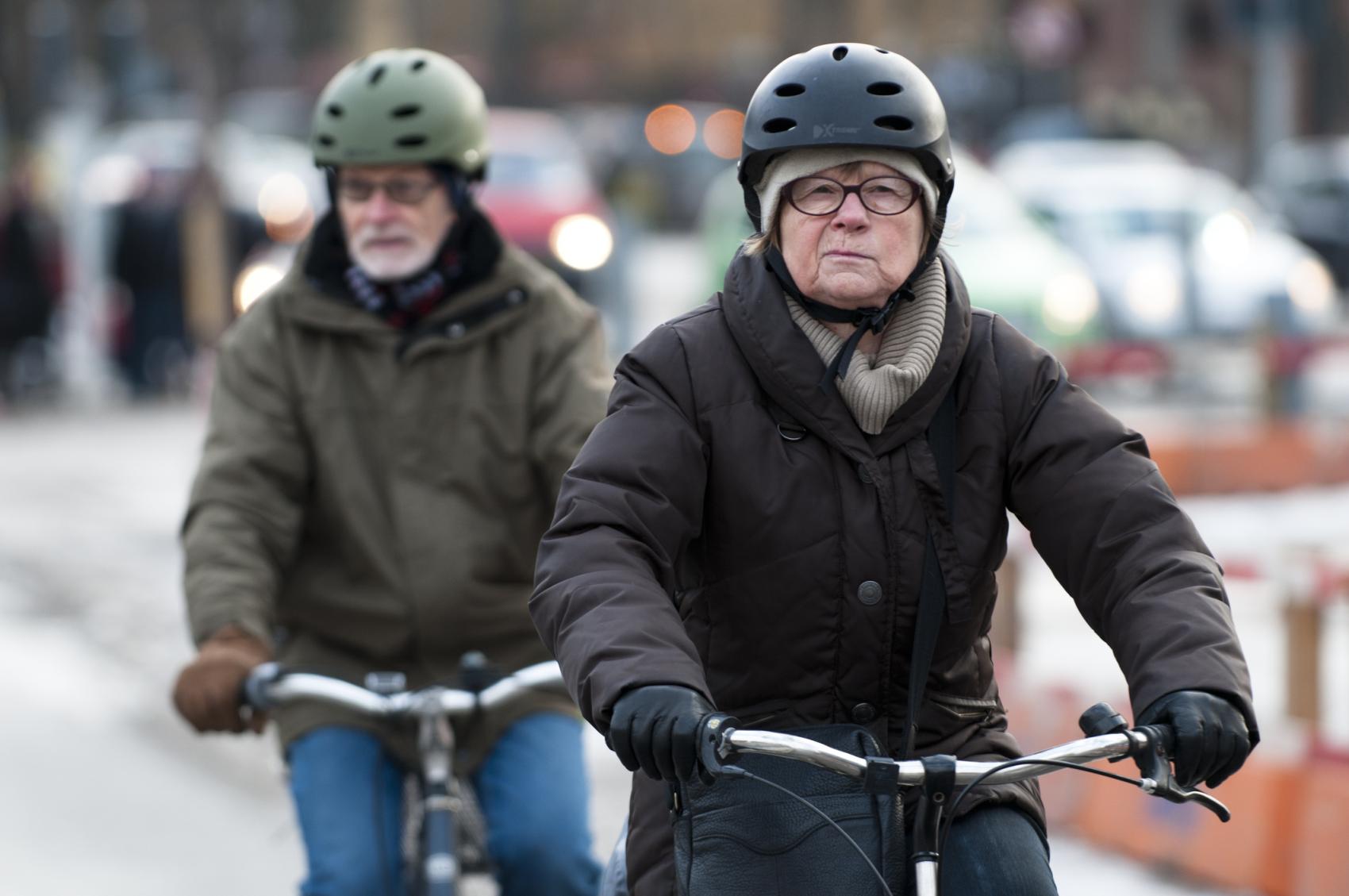
Cycling is a secret weapon against transport poverty – help us secure its place in the EU Social Climate Fund!
From 2026, €87 billion will be available through the EU Social Climate Fund for targeted purchase subsidies, cycling infrastructure projects, and bike-sharing schemes – key tools to fight transport poverty. However, this can only happen if Member States include these measures in their national Social Climate Plans, which must be submitted by June 2025. Here is how you can help us ensure that the Social Climate Fund is used to prioritise reliable, affordable, and sustainable transportation options for all.
What is the EU Social Climate Fund?
In March 2023, the EU institutions adopted the Regulation establishing the Social Climate Fund (SCF). The SCF is designed to address the social consequences of creating an emissions trading system for the building and road transport sectors. It also aims to mitigate the rising costs that might ensue for particularly vulnerable groups, including households, micro-enterprises and transport users who are at risk of energy and transport poverty.
How much money is available?
The fund will provide almost €87 billion in targeted support to all EU Member States between 2026 and 2032. The allocation of the Social Climate Fund to Member States is determined by several factors:
-
The percentage of the population at risk of poverty in rural areas
-
CO2 emissions from home fuel
-
The percentage of households at risk of poverty with arrears on utility bills
-
The total population
-
GNI (Gross National Income) per capita
The Member States set to receive the largest shares form the Fund are Poland (17.6% of the SCF’s budget), France (11.2%), Italy (10.8%), Spain (10.5%), and Romania (9.3%).
How will Member States access the funding?
To access the fund, Member States must submit Social Climate Plans to the European Commission for review and approval by June 2025 via their responsible authorities. When drafting their plans, Member States are required to organise a public consultation with local and regional authorities, representatives of economic and social partners, relevant civil society organisations, youth organisations and other stakeholders.

Which measures can be funded?
The Social Climate Fund aims to increase the availability, accessibility, and affordability of zero- and low-emission alternatives in the building and transport sectors to address energy and transport poverty among lower-income groups and micro enterprises.
The eligible measures include energy-saving renovations, decarbonisation of heating and cooling systems, and zero/low-emission vehicles. Member states can use SCF funds for fiscal incentives or financial support to make zero- and low-emission vehicles and bicycles more affordable, as well as to modernise infrastructure. The SCF Regulation also specifically mentions support for private and public entities to provide accessible and zero-emission transport options, shared mobility services (e.g. bike sharing) and active mobility options, including cycling infrastructure. Additionally, the regulation contains a list of concrete indicators for the monitoring of the national plans and the Fund as a whole. The following output indicators for cycling translate these measures into tangible impact for cycling promotion:
-
Indicator 23: Number of bicycles and micro-mobility vehicles supported by measures and investments financed under the Fund.
-
Indicators 26 + 27: Additional shared mobility and mobility on-demand solutions.
-
Indicator 28: Length of dedicated cycling infrastructure newly built or significantly upgraded by projects supported under the Fund

What are examples of cycling measures that would be eligible under the Social Climate Fund?
The Commission has issued guidance on good practices for cost-effective measures and investments. Cycling-related good practices include an income-dependent cargo bike subsidy scheme focusing on families. as well as a programme to improve mobility around schools, including active mobility infrastructure. It has also published a set of recommendations specifically for the transport sector as formulated by the Subgroup on Public Transport and Shared Mobility of the Expert Group on Urban Mobility. ECF and our partners Cycling Industries Europe (CIE) are active members of the group, and we are happy to see our joint recommendations reflected in the document. Among others, these recommendations include numerous examples of how support for bike-sharing schemes can alleviate transport poverty.
Additionally, ECF and CIE have compiled a list of good practice examples in this advocacy guidance document.
What is transport poverty?
The regulation defines transport poverty in a way that goes beyond the traditional focus on (fossil fuel) transport costs, incorporating the concept of accessibility. Transport poverty is defined as, among others, the “lack of or limited access to transport needed for … access to essential socio-economic services and activities”. This allows for a wider range of possible solutions to transport poverty, beyond purely financial instruments, like subsidies for electric cars or direct income support to measures like support for shared mobility or improvements for active mobility. Accompanying research supports that the three main factors contextualising transport poverty are availability, accessibility and affordability.
How does cycling help to ease transport poverty?
Cycling, together with walking, is the mode of transport best placed to provide basic access to essential socioeconomic services and activities in the local environment for those vulnerable to transport poverty. Focussed cycling interventions have a proven record of reaching people experiencing or at risk of transport poverty. Cycling is available, accessible and affordable.

Enabling more people to cycle safely is a quick, reliable and cost-effective way to alleviate transport poverty.
-
Cycling, including e-bikes, is a mobility choice that can easily be made available to people at risk of transport poverty of all ages and abilities – in urban, peri-urban as well as rural areas.
-
Cities and regions that promote more and safer cycling ensure that basic goods and services, jobs and other socioeconomic opportunities are more accessible by bicycle to the target population. This also fosters greater equity and inclusiveness, as high-quality cycle paths and sidewalks are also ideal infrastructure for wheelchairs, trikes and other mobility aids.
-
Cycling is an affordable mode of transport, which makes it the most relevant transport option in the Social Climate Fund for reaching people on low incomes. Using a recent study on the costs of car use, we found that even when using conservative assumptions about bicycle prices and life cycles, private ownership of a bicycle can be 14 times cheaper than owning an Opel Corsa and 27 times cheaper than a Mercedes SUV.
What can you do?
The inclusion of cycling measures and indicators in the Social Climate Plans will ultimately depend on Member States’ individual decisions. Therefore, it is crucial for cycling sector organisations at the national level to make their voices heard in joint campaigns during the drafting of these plans, which will continue until June 2025. We encourage these organisations to advocate for the use of the Social Climate Fund for cycling measures in their communications with national responsible authorities, and to participate in the national public consultation process.
You can find more detailed information in our advocacy guidance document.
Contact the author
Recent news!
Upcoming events
Contact Us
Avenue des Arts, 7-8
Postal address: Rue de la Charité, 22
1210 Brussels, Belgium









